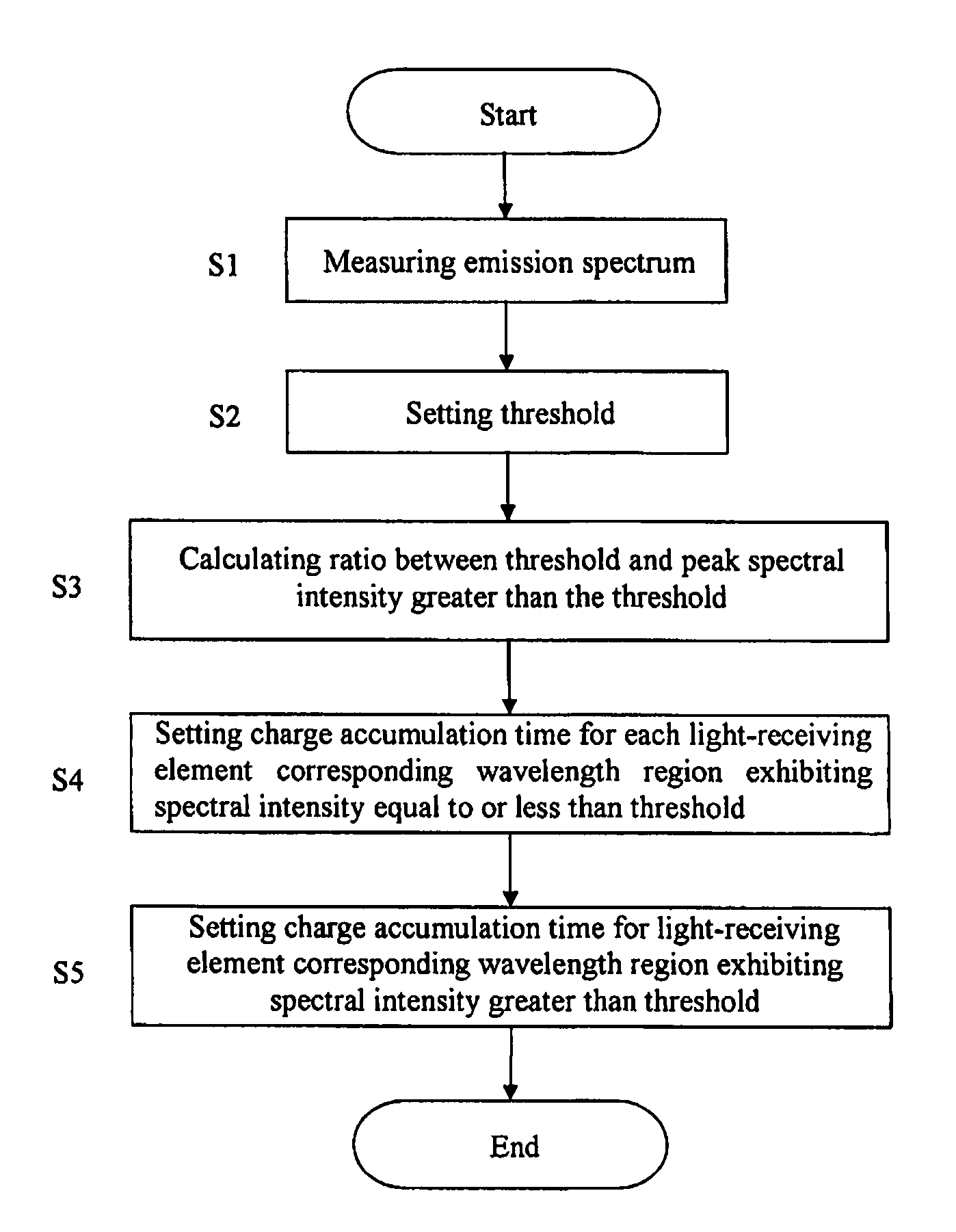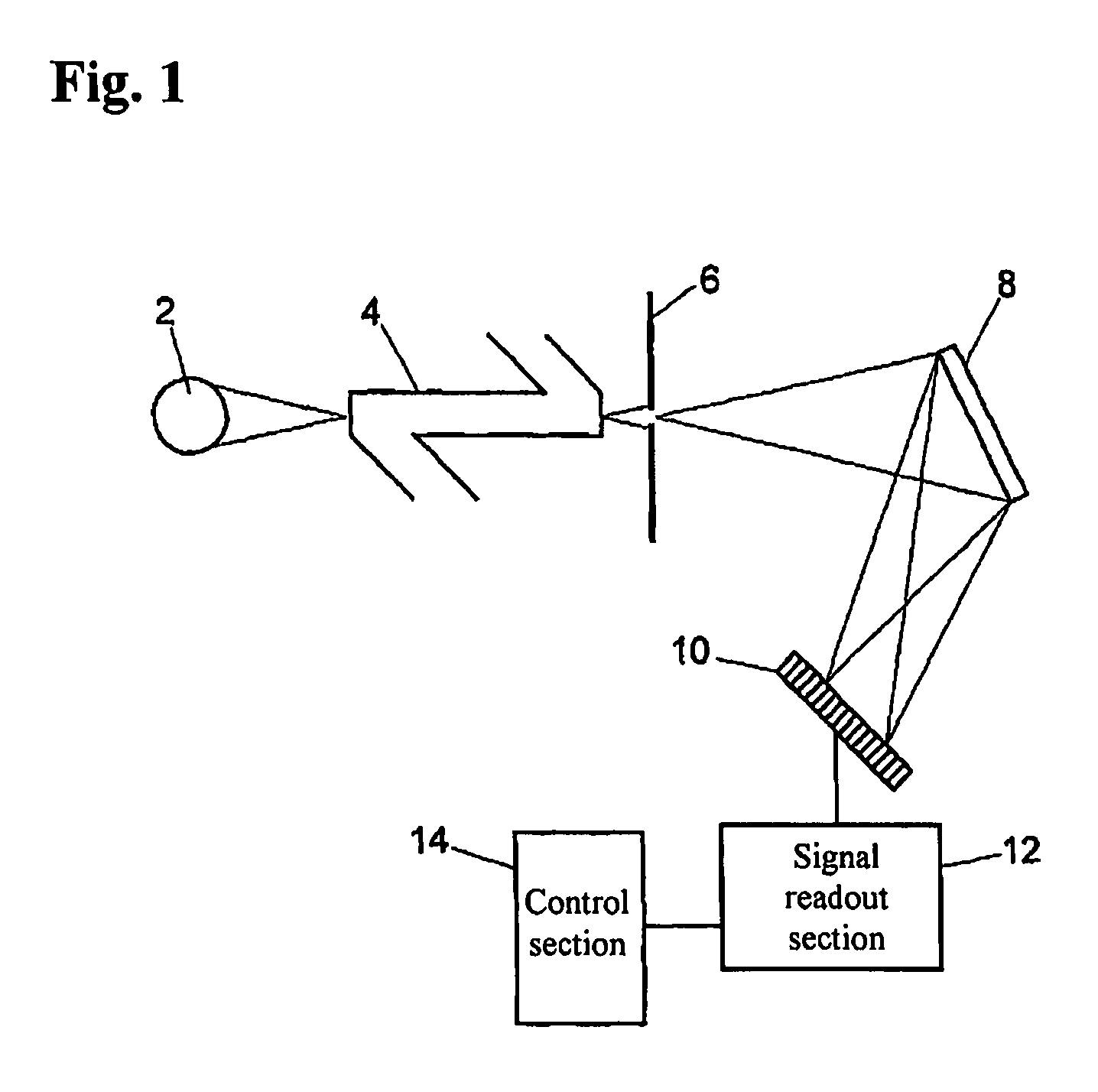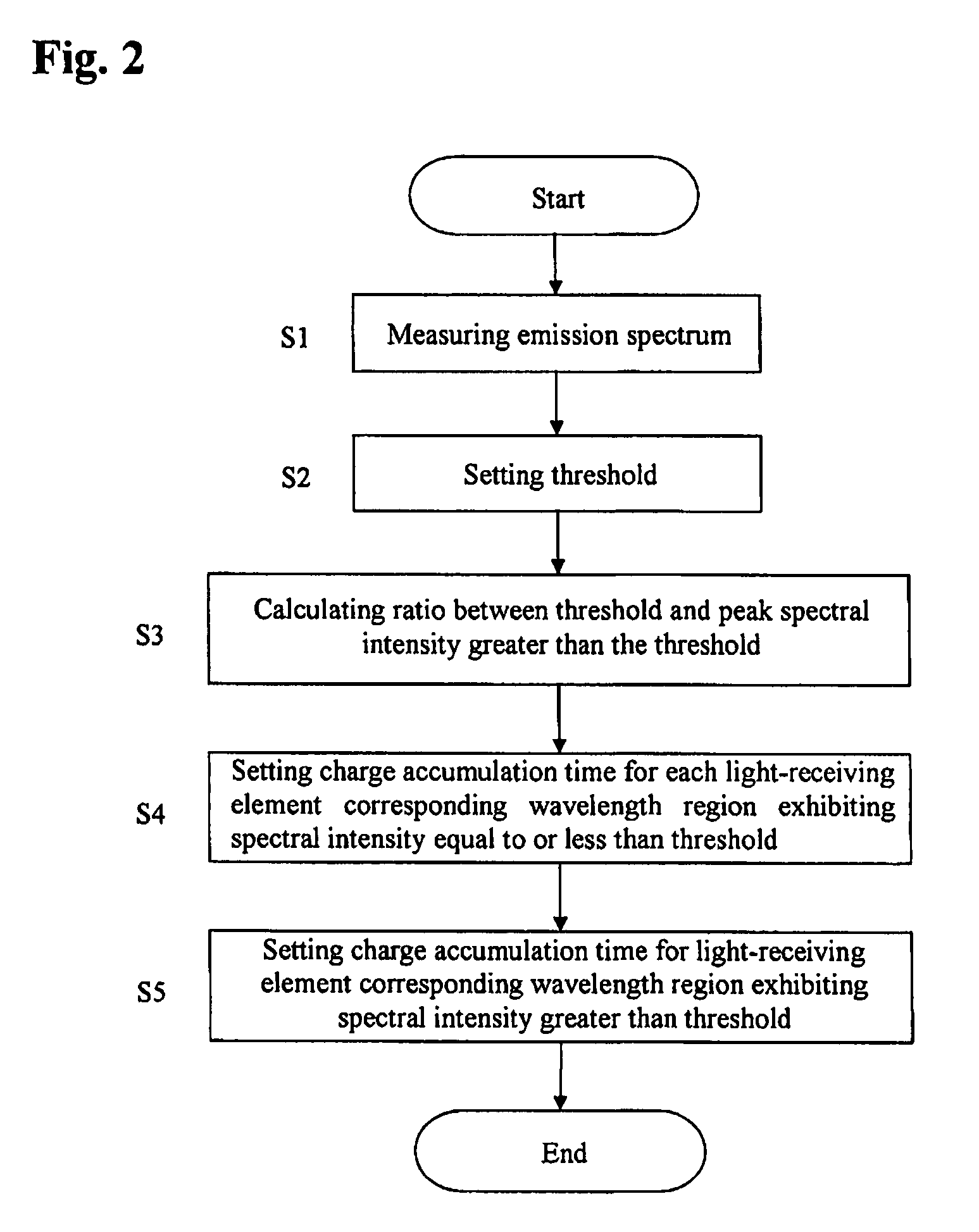Spectrophotometer with optical system for spectrally dispersing measurement light and photodiode array
a spectrophotometer and optical system technology, applied in the field of spectrophotometers, can solve the problems of large measurement errors, increased noise-to-signal ratio, and structural complication, and achieve the effect of reducing the amount of electric charge and lowering the signal strength of the light-receiving elemen
- Summary
- Abstract
- Description
- Claims
- Application Information
AI Technical Summary
Benefits of technology
Problems solved by technology
Method used
Image
Examples
Embodiment Construction
[0031]FIG. 1 is a schematic block diagram showing a spectrophotometer according to one embodiment of the present invention, wherein the spectrophotometer is used for a liquid chromatography measurement.
[0032]In this embodiment, the spectrophotometer is designed such that measurement light is emitted from a light source 2 comprising a D2 lamp and a W lamp, to a flow cell (sample chamber) 4 having therein a flow of an eluate from a liquid-chromatographic column, so as to measure an absorbance. The light transmitted through the flow cell 4 is formed as a line-shaped beam through a slit 6. Then, the line-shaped beam is spectrally dispersed into its light components with respect to each wavelength region through a wavelength dispersion element 8, and the spectral light components are entered into a photodiode array 10. The photodiode array 10 comprises a plurality of light-receiving elements each composed of a photodiode and arranged in corresponding relation to respective spectral light...
PUM
 Login to View More
Login to View More Abstract
Description
Claims
Application Information
 Login to View More
Login to View More - R&D
- Intellectual Property
- Life Sciences
- Materials
- Tech Scout
- Unparalleled Data Quality
- Higher Quality Content
- 60% Fewer Hallucinations
Browse by: Latest US Patents, China's latest patents, Technical Efficacy Thesaurus, Application Domain, Technology Topic, Popular Technical Reports.
© 2025 PatSnap. All rights reserved.Legal|Privacy policy|Modern Slavery Act Transparency Statement|Sitemap|About US| Contact US: help@patsnap.com



